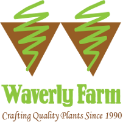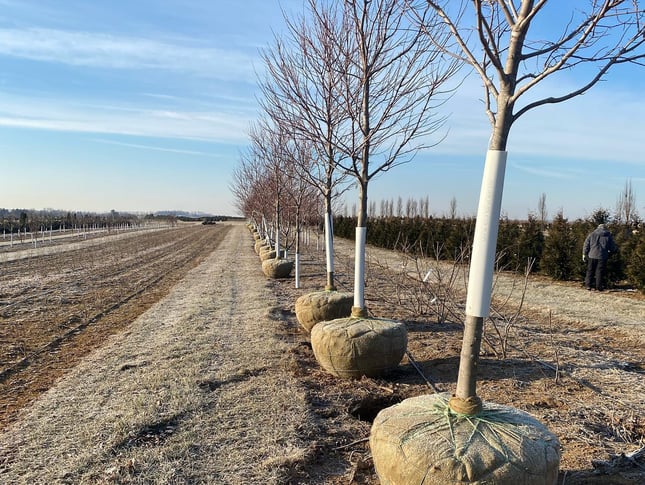After you spend days picking out the perfect nursery plants for your landscape project, the last thing you want to worry about is delivery. Perhaps you’ve experienced that unpleasant surprise once or twice–that plants arrived at the job site damaged or not as you expected. But when growers follow best practices for handling and protecting nursery plants for shipping, they minimize the opportunity for harm and ensure your plants will arrive in the best condition possible. More thought and preparation goes into it than you may realize.
What Can Go Wrong During Nursery Plant Transport?
Once a nursery plant has been harvested, it will be moved from the field to the staging area, loaded onto a flatbed, transported to the delivery site and finally unloaded. This process provides multiple opportunities for things to go wrong such as:
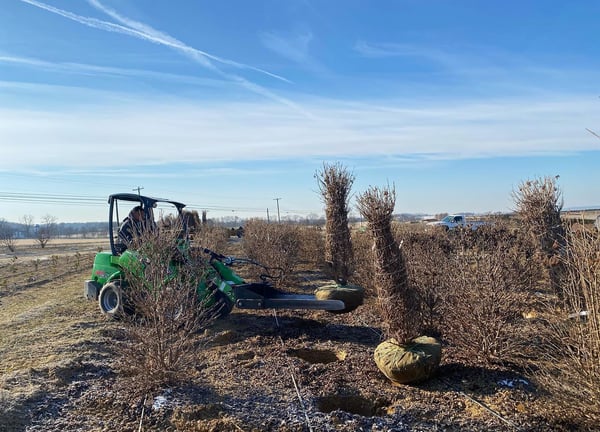 Shifting Load: If nursery plants are not loaded properly to minimize movement and prevent load shifting, we could end up with a mis-shapen root ball or broken branches on delivery.
Shifting Load: If nursery plants are not loaded properly to minimize movement and prevent load shifting, we could end up with a mis-shapen root ball or broken branches on delivery.
Wrapping Delicate Plants: There are certain plants that are more damage-prone than others. In these cases, extra care must be taken at the nursery. Redbud (Cercis canadensis) and Weeping Japanese maples (Acer palmatum var. dissectum) have branches that are stiff and easily snapped. This makes them difficult to wrap–especially the maples because they can reach 12 feet wide but must be contained to an 8 foot area.
Offloading: Most branch breakage occurs during offload when a forklift is used to move plants from the truck to the staging area at the job site. If care isn’t taken at this final step, it doesn’t matter how well the transport went. Poor crew handling can really do a number on plants.
At Waverly Farm, we try to minimize the number times we handle or move a plant once we have harvested it. And we take the time to make sure all plants are protected and securely loaded. We are famously slow at loading, but our guys get it right. Our truckers acknowledge that it makes a difference at the delivery end (even if they hate waiting around for us to finish).
Nursery Plant Preparation and Protection: From Field to Job Site
There is a system for getting your nursery plants from the field into your customer’s back yard. It isn’t fail-proof, nothing is, but it goes a long way to ensuring the plants that arrive on delivery day look just like the ones you tagged days or weeks before.
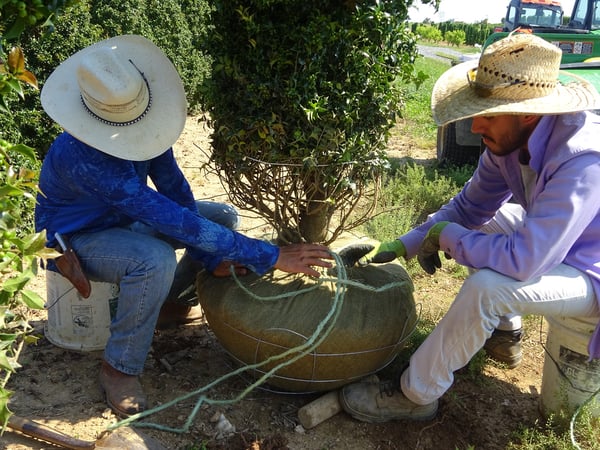 Step 1: Secure the Root Ball at Harvest
Step 1: Secure the Root Ball at Harvest
Protect the integrity of the root ball
The very first step to a successful delivery takes place in the nursery field when a plant is first harvested. When that root ball is dropped into a wire basket in the field, tying that basket firmly to the trunk of the tree has to be done meticulously well. You want to prevent it from flopping around and weakening the root system or distorting the shape of the root ball.
Step 2: Check Soil Moisture
Successful plants are fully hydrated at dig time—and stay hydrated during transport.
Soil moisture at the time of harvest is key to digging a stable, well-formed root ball. Soil should be moist. Not wet. Not dry. During summer harvest or even dry conditions when plants are dormant, we use a root probe to individually irrigate plants about two days before digging for just this reason.
Moisture levels must be maintained prior to and during transport. Plants in the loading area must be irrigated daily while awaiting pick up. In preparation for transport, it’s imperative during the warm season to apply an anti-desiccant to slow transpiration of water vapor for up to several weeks.
Step 3: Handle With Care
Keep handling of the plant to a minimum
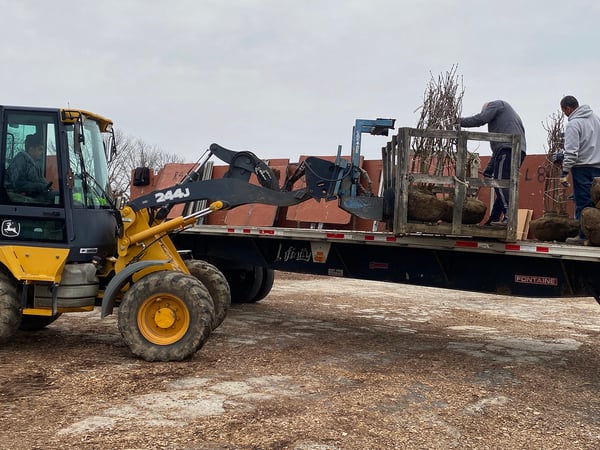 Careful handling of plants is essential. Growers need to minimize the opportunities for “accidents” where a plant is harmed while it is being handled and moved from field to truck bed. This is a multi-stepped process that is time-consuming but vital.
Careful handling of plants is essential. Growers need to minimize the opportunities for “accidents” where a plant is harmed while it is being handled and moved from field to truck bed. This is a multi-stepped process that is time-consuming but vital.
We load most plants directly onto a field pallet. That pallet of plants is offloaded directly onto a truck. This allows us to reduce the number of times we handle the root ball as we move the plant from the field to the pick up area.
When loading the trucks, we place cardboard separators between plants to make sure branches do not abrade against each other. This is in addition to wrapping the trunks and tying up branches securely.
Step 4: Tarp the Truck
The final step in the transport process that the grower must follow is to tarp the truck. Does this seem too obvious to mention? You'd be surprised! The plants must be secured and protected from the wind, cold, and heat. In summer, we even double tarp for extra protection.
Successful Delivery Starts in the Field
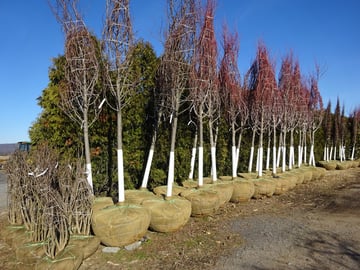 The reality is that successful plant delivery for your customers starts in the nursery field. If your grower does everything right from securing the root ball in the wire basket to wrapping the branches and trunk, irrigating, and careful handling, the transportation process shouldn’t be a concern at all.
The reality is that successful plant delivery for your customers starts in the nursery field. If your grower does everything right from securing the root ball in the wire basket to wrapping the branches and trunk, irrigating, and careful handling, the transportation process shouldn’t be a concern at all.
Picture perfect nursery plants can’t arrive 100% of the time, but they can arrive most of the time when your grower follows best practices for preparing and protecting your shipment.
Our ebook “Why Accurate Plant Pricing is Good for Everyone” will give you additional perspective on how all these field production details affect the delicate balance between price and value.
